Dogs have long been renowned as “man’s best friend,” but the world of dog breeds is far more diverse than the most prevalent and well-known types. There is a collection of uncommon and rare dog breeds among this enormous canine diversity that attracts fans with their particular qualities, histories, and appearances.
Table of Contents
Introduction
In this complete guide, we’ll take a fascinating journey into the world of rare dog breeds, digging deep into their history, traits, temperaments, and the reasons for their relative obscurity. Join us as we explore the canine kingdom’s secret gems and discover the mysteries of these fascinating and lesser-known furry friends.
20 Unique Dog Breeds
- Affenpinscher
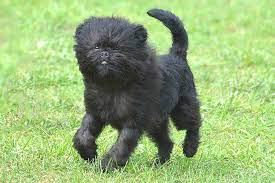
The Affenpinscher, sometimes known as the “monkey dog,” is a lovely tiny breed that originated in Germany. Despite their small stature, Affenpinschers have a tremendous personality that captivates dog lovers all over the world. They ooze charm and character with their impish face, wiry coat, and expressive eyes.
Affenpinschers are recognized for their courageous and bold personalities, which make them good watchdogs despite their small stature. They are attentive, intelligent, and have a good understanding of their surroundings. These rare dog breeds are affectionate and loyal to their human families, and they thrive on attention and friendship.
2. The Azawakh
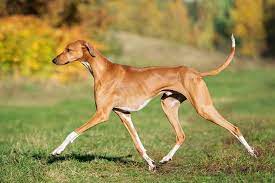
The Azawakh is a regal and slim sighthound breed from the African continent. They are frequently regarded as one of the most visually appealing rare dog breeds due to their grace and beauty. Azawakh are a sight to behold, with their sleek bodies, long legs, and beautiful movements. They were bred for speed, agility, and hunting prowess.
While they may appear distant to strangers, Azawakh are known to be loving and affectionate to their human companions. They build deep relationships with their family and are devoted to them. Their independent character, however, necessitates patience and constant training to promote correct socialization and obedience.
3. The Bergamasco Shepherd
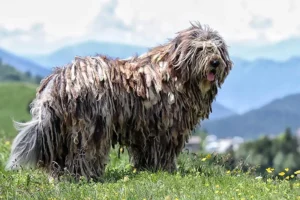
The Bergamasco Shepherd, which originated in the Italian Alps, is a remarkable herding breed distinguished by its distinctive coat. They resemble walking carpets, with long, dense mats of hair covering their bodies. This unique coat protects them from severe weather and predators, making them well-suited to herding chores.
Bergamascos are highly clever, and loyal, and have outstanding herding instincts, in addition to their beautiful looks. They are recognized for their attentiveness, agility, and responsiveness to their owner’s demands. They may be reticent among outsiders, but they build strong relationships with their families and are frequently gentle and affectionate companions.
4. The Catahoula Leopard Dog

The Catahoula Leopard Dog, commonly known as the Catahoula Cur, is one of the multi-talented working rare dog breeds from Louisiana, USA. This stunningly gorgeous breed has a variety of coat colors and patterns that resemble the majestic leopard. Catahoulas are recognized for their intellect, independence, and outstanding problem-solving ability. They were originally bred to be expert herders and fearless hunters.
Catahoulas excel in a variety of roles, including search and rescue, tracking, and rehabilitation work, in addition to herding. Because of their adaptability and versatility, they are suited for a wide range of living conditions and tasks. They do, however, require an experienced and committed owner who can provide constant training, mental stimulation, and physical activity.
5. The Chinook
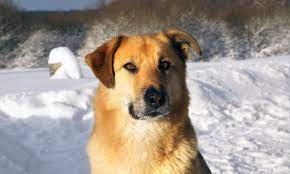
The Chinook is an American sled dog breed known for its strength, endurance, and exceptional work ethic. These rare dog breeds were developed in the early twentieth century as hybrids between numerous northern breeds, resulting in a flexible and capable sled dog. Chinooks have a pleasant and sensitive nature, making them not only good sled pullers but also good family companions.
Unfortunately, the Chinook is now regarded as one of the rarest dog breeds due to its small number. Efforts are being made to maintain and promote this breed, but prospective owners should expect to put in time and effort to find a trustworthy breeder. Chinooks may bring delight and company to their families while also demonstrating their amazing sledding ability thanks to their loyal and affectionate temperament.
6. The Dandie Dinmont Terrier
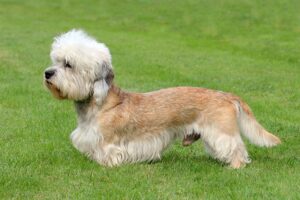
The Dandie Dinmont Terrier is a small terrier breed that originated on the English-Scottish border. They have a distinct and endearing appearance with their unusual topknot of hair, long body, and small legs. These rare dog breeds, named after a character in Sir Walter Scott’s work, have a vivacious and friendly personality that endears them to their owners.
Dinmont and Dandie Terriers are noted for their intelligence, drive, and self-sufficiency. They are excellent hunters with a strong hunting drive. They can be nice and kind with children and other pets if properly trained and socialized. Their terrier inclinations, however, necessitate firm and constant treatment to prevent any stubborn or domineering behavior.
7. The Karelian Bear Dog
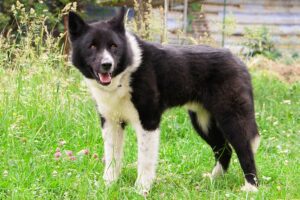
The Karelian Bear Dog, which originated in Russia and Finland’s Karelia area, is a bold and assertive breed suited for hunting huge wildlife, especially bears. These rarest dog breeds in the world have a strong hunting drive as well as an unyielding need to protect their territory and loved ones. Karelian Bear Dogs are remarkable and impressive to look at, with their well-muscled bodies, dense double coats, and sharp, alert looks.
While Karelian Bear Dogs have a strong hunting instinct, they may also be devoted and loving family pets if properly taught and socialized from an early age. They are intelligent, self-sufficient, and highly adaptable to various living situations. Their forceful temperament, on the other hand, necessitates skilled handling and a tough, consistent approach to teaching.
8. The New Guinea Singing Dog

The New Guinea Singing Dog is a unique and primitive breed native to New Guinea’s remote island. They were dubbed “singing dogs” because of their distinctive vocalizations, which resembled a musical howl. They resemble the dingo, another primitive canine species, in both appearance and behavior.
New Guinea Singing Dogs have preserved their wild instincts and characteristics due to their remote and isolated location. They are extremely curious, nimble, and have a strong prey drive. They demand competent and dedicated owners who can provide a stimulating and enriching environment while also assuring their safety and well-being as pets. The New Guinea Singing Dog is one of the rarest dog breeds in the world that is rarely seen outside of specialist facilities or breeding programs.
9. The Norwegian Lundehund
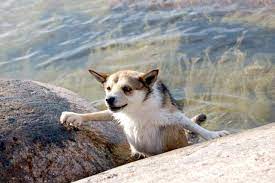
The Norwegian Lundehund, which originated on Norway’s remote islands, is one of the rarest dog breeds in the world with unusual physical characteristics. The Lundehund, known for its exceptional flexibility and agility, has six completely functional toes on each foot, helping it easily cross uneven terrains and climb steep cliffs. Historically, this breed was used to hunt puffins and their eggs in the perilous Norwegian coastal cliffs.
Lundehunds are bright, attentive, and self-sufficient, in addition to their extraordinary athletic ability. They are frequently regarded as vivacious and playful, which makes them excellent companions for active families. However, their independence can make training difficult, necessitating patient and consistent methods. Early socialization is critical to ensure they get along with other animals and people.
10. The Xoloitzcuintli
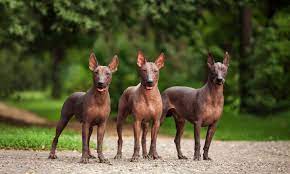
The Xoloitzcuintli, also known as the Xolo or Mexican Hairless Dog, is an old breed with a long history in Mexico extending back thousands of years. Xolos were revered by the Aztecs and other indigenous societies for their spiritual and healing qualities. They were frequently regarded as protectors and companions of the human spirit.
These rarest dog breeds in the world are available in three sizes (toy, miniature, and standard), as well as two coat types (hairless and coated). Xolos are well-known for their devotion, intelligence, and sensitivity. They build great relationships with their family and are frequently referred to as velcro dogs because they keep close to their loved ones. Xolos, despite their ancient ancestors, are adapted to modern living and may survive in a variety of situations. Their rear coat and skin, however, necessitate special care to protect them from the sun and keep their skin hydrated.
11. The Lagotto Romagnolo
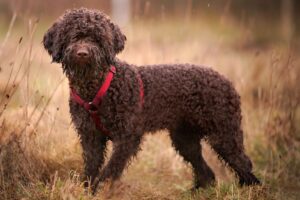
The Italian breed Lagotto Romagnolo is famous for its excellent ability to hunt truffles, a treasured culinary delicacy. The Lagotto Romagnolo is the ultimate truffle-hunting dog, thanks to its dense, curly coat and excellent sense of smell. This breed, which originated in the Romagna sub-region of Italy, has a long history and tradition as a versatile working dog.
Lagotto Romagnolos are bright, friendly, and easily trained in addition to their truffle-hunting abilities. They build close ties with their family and are well-liked by youngsters and other pets. Because of their adaptability, they excel in a variety of dog sports and activities, making them a popular choice for active families. Their curly coat, on the other hand, necessitates frequent brushing to prevent matting and keep them looking their best.
12. The Thai Ridgeback
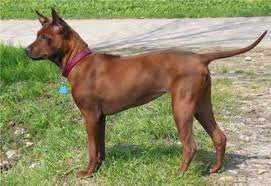
The Thai Ridgeback is also one of the rarest dog breeds in the world from Thailand. This breed is known for its characteristic ridge of hair running up its back in the opposite direction as the rest of its coat, and it has a strong and independent personality. Thai Ridgebacks have traditionally been used as adaptable hunting dogs capable of tracking and capturing a wide range of wildlife.
Thai Ridgebacks are faithful and protective of their families, despite being aloof and reticent with strangers. They need early socialization and constant training to grow into well-rounded, well-behaved dogs. They are popular in busy households due to their agility, intelligence, and high energy levels. The Thai Ridgeback is an attractive breed for people looking for an exotic and faithful companion due to its distinct looks and independent nature.
13. The Peruvian Inca Orchid
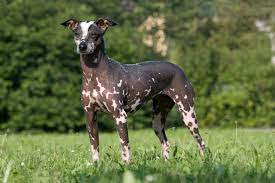
The Peruvian Inca Orchid, commonly known as the PIO or Peruvian Hairless Dog, is a centuries-old Peruvian breed. These exquisite and rarest dog breeds in the world are available in three sizes (small, medium, and large) and can be hairless or coated. The hairless version is the most recognized, with smooth, warm-to-the-touch skin and a crest of hair on the head.
Peruvian Inca Orchids are noted for their delicate and caring attitude. They build close relationships with their family and are frequently described as sensitive and insightful companions. Because of their hairless skin, they require specific care, such as sun protection, moisturizing, and bathing on occasion. They are hypoallergenic and may be suitable for people who are allergic to dog dander.
14. The Otterhound
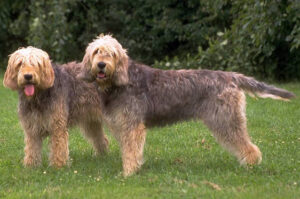
The Otterhound is a huge and distinct breed distinguished by its shaggy and dense hair. These rarest dog breeds in the world were developed in Britain expressly for otter hunting, using its superior scenting skills and webbed paws to follow and capture otters in the water. The Otterhound is now an uncommon breed, and its major function is that of a family companion.
Otterhounds are recognized for being social and friendly. They usually get along nicely with children and other pets, making them a good choice for families. They make excellent partners for outdoor activities near lakes or rivers due to their strong swimming instincts and love of water. Their shaggy coat, on the other hand, necessitates frequent brushing and upkeep to prevent matting and maintain it clean and healthy.
15. The Azores Cattle Dog

The Azores Cattle Dog, also known as the Co Fila de So Miguel, is a Portuguese breed from the Azores Islands. These rare dog breeds have a long history of being versatile working dogs, particularly employed for herding and livestock guarding. The Azores Cattle Dog has a commanding presence due to its powerful and muscular form.
This breed is recognized for its devotion, intelligence, and strong protective instincts, in addition to its herding and guarding qualities. Azores Cattle Dogs build strong ties with their owners and are extremely faithful. Early socialization and continuous training are essential for developing well-mannered, well-behaved dogs. While they may be apprehensive of strangers, they are usually friendly and caring towards their family members.
Note: There might be affiliate links mentioned here. We may receive a commission if you purchase a product through an affiliate link. There is no additional charge for you. Please do your own research before making any online purchases.
16. The Tibetan Mastiff
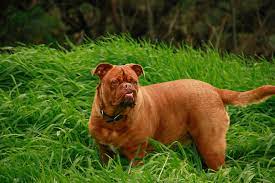
The Tibetan Mastiff is a majestic and powerful breed that originated in the Himalayan region to protect cattle and properties from predators. The Tibetan Mastiff is an impressive guardian and protector due to its massive size, thick double coat, and commanding presence.
Tibetan Mastiffs are famed for their independence and willpower. They are naturally wary of outsiders, and their devotion and protective instincts make them excellent family guardians. Early socialization and persistent instruction are critical for them to develop into well-behaved and well-adjusted adults. Despite their intimidating size, Tibetan Mastiffs are gentle and friendly with their families, forming strong relationships of loyalty and devotion.
17. The Finnish Spitz
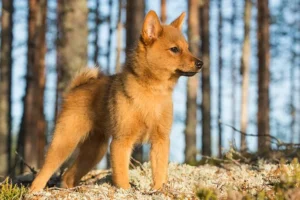
The Finnish Spitz, often known as the Finkie, is a vivacious and noisy breed that serves as Finland’s national dog. This rare dog breed has a long history as a hunting dog, having been developed to track and notify hunters of the presence of game such as birds and small mammals.
Finnish Spitz dogs are distinguished by their bright red coats, fox-like look, and curling tails carried over their backs. They are gregarious and outgoing, making them excellent family companions. They are usually excellent with children and other pets, but early socialization is essential. Finnish Spitz dogs communicate with their owners via “yodeling,” a unique barking style. Regular exercise and mental stimulation are vital for preventing boredom and maintaining a healthy Finkie.
18. The Carolina Dog
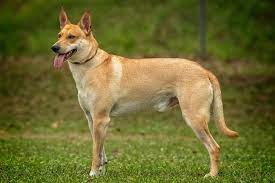
The Carolina Dog, also known as the American Dingo or the Dixie Dingo, is a prehistoric breed whose ancestors may be traced back thousands of years to ancient dogs who inhabited the Southeastern United States. The Carolina Dog, one of the few remaining landrace breeds, has preserved its primal instincts and features.
These rare dog breeds are medium in size and have a lean, muscular frame. They have a strong hunting drive, a keen sense of smell, and sensitive hearing. Carolina Dogs are clever, self-sufficient, and adaptable to a variety of circumstances. They can be loyal and affectionate family companions, but their wild nature necessitates expert handling and consistent training. Carolina Dogs may flourish in active households and excel in activities such as agility and obedience with proper socialization and training.
19. The Saluki
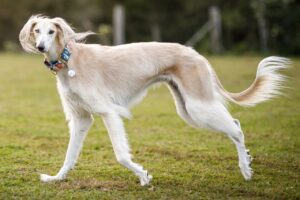
The Saluki, often known as the “Royal Dog of Egypt,” is an ancient breed that has been around for almost 4,000 years. The Saluki is a sighthound bred for coursing and hunting wildlife in the desert. It is known for its grace, elegance, and remarkable speed.
Salukis have a slim and athletic frame, as well as long, silky coats in a range of colors. They are calm and reserved, and they usually build close relationships with their family. While they may be wary of strangers, they get along well with youngsters and other pets. Salukis must be exercised on a regular basis to meet their physical needs and gated yards are recommended to keep them from pursuing small animals owing to their strong prey drive.
20. The Stabyhoun

The Stabyhoun is a versatile and intelligent working breed from the Netherlands. Historically employed for small game and waterfowl hunting, the Stabyhoun is highly skilled in tracking, obedience, and agility. The Stabyhoun is an attractive and capable working companion with its medium-sized physique, characteristic long coat, and kind expression.
Stabyhouns are regarded as being polite and friendly. They build close ties with their family and are frequently gentle with youngsters and other pets. These rare dog breeds are extremely trainable and eager to please, making them ideal for a variety of dog sports and activities. Stabyhouns thrive in active households that provide them with plenty of exercise, mental stimulation, and quality time with their owners.
FAQs
What are rare dog breeds?
Rare dog breeds are those with a tiny population and are not as prevalent or well-known as popular breeds. These breeds are generally rare due to distinctive traits, historical significance, or specialized functions.
What distinguishes rare dog breeds from popular ones?
In terms of popularity, availability, and recognition, rare dog breeds differ from popular breeds. Popular breeds are well-known, widely bred, and readily available in many locations. Rare breeds, on the other hand, have smaller numbers, fewer breeding programs, and may be more difficult to locate or acquire.
Are rare dog breeds appropriate for households with children?
Whether a rare dog breed is appropriate for a family with children is determined by the breed’s temperament, energy level, and compatibility with children. Some uncommon breeds are recognized for being gentle and family-friendly, but others may be better suited for houses without small children. To assess compatibility for a family with children, it is critical to investigate and comprehend the individual breed’s traits, as well as consult with respected breeders or specialists.
Can rare dog breeds adapt to new living conditions?
Many unique dog breeds may adapt to a variety of living situations, such as apartments, suburban homes, or rural settings. However, due to their size, energy level, or activity requirements, some rare breeds may have special needs or requirements. It is critical to evaluate the breed’s distinctive characteristics and consult with experts to ensure that the living environment is appropriate for the specific rare breed.
Do rare dog breeds necessitate specific care or training?
The care and training needs of uncommon dog breeds can differ. While some rare breeds may require special grooming or dietary considerations, others may require equivalent care to more popular breeds. The breed’s intelligence, energy level, and temperament will also influence training requirements. It is critical to investigate and understand the unique needs of the unusual breed and to be prepared to give any special care or training that may be required.
Are rare dog breeds prone to any particular health problems?
Because of their genetic history or tiny population size, several rare dog breeds may have special health risks. Certain rare breeds, for example, may be predisposed to certain hereditary diseases or have a higher risk of certain health problems. Responsible producers of rare breeds work hard to reduce these dangers through careful breeding and health testing. Before making a decision, it is critical to conduct research and learn about any potential health risks related to a specific uncommon breed.
How can I locate a reliable breeder of a rare dog breed?
Locating a reliable breeder for a rare dog breed necessitates extensive research and investigation. Begin by contacting kennel clubs or national or regional breed clubs linked with the specific breed. They can provide information about trustworthy breeders, breed standards, and required health testing. Meet breeders and ask inquiries at dog shows or events where the uncommon breed may be present. Look for breeders who value their dogs’ health and well-being, do health tests, and are open about their breeding processes.
Do kennel clubs acknowledge rare dog breeds?
Kennel clubs recognize many uncommon dog breeds, albeit the extent of recognition varies. National kennel clubs or breed-specific organizations may recognize some rare breeds, but international kennel groups may not. Kennel Club recognition can provide assurance of breed standards and responsible breeding procedures.
Can rare dog breeds compete in dog shows or contests?
Yes, uncommon dog breeds can compete in dog shows and competitions, albeit their availability and frequency of events may be limited in comparison to popular breeds. In some kennel clubs’ exhibitions and contests, there are special classes or categories for rare breeds. Participation in these events can highlight the features of the breed, increase breed awareness, and allow breeders to analyze and improve their breeding operations.
Where can I learn more about rare dog breeds and how to care for them?
You can learn more about uncommon dog breeds and their maintenance by visiting the following websites:
- Breed groups and kennel clubs affiliated with the specific unusual breed.
- Breed-specific websites and online groups devoted to the preservation of uncommon dog breeds.
- Books or publications about dog breeding and uncommon breeds.
- Consultation with veterinarians that specialize in rare breeds.
- Participation in dog shows, exhibits, or events where the uncommon breed is present.
- Trustworthy breeders or breed aficionados who are well-versed in the rare breed.
Using these resources, you can learn about the history, traits, care requirements, and potential issues of the rare breed.
Conclusion
Rare dog breeds provide an intriguing and one-of-a-kind alternative to the more often-seen types. These breeds are rare because of their specific traits, historical significance, and specialized purposes. Rare breeds, while not as widely available or well-known as popular breeds, can make terrific companions for the proper families.
When selecting a rare dog breed, it is critical to investigate and comprehend their temperament, energy level, and compatibility with children or other living settings. Some rare breeds may necessitate particular care or training, but others have similar requirements to more common types. Finding a reputable breeder who values the health and well-being of their dogs, performs appropriate health testing, and follows breeding guidelines is part of responsible ownership.
Because these rarest dog breeds in the world may experience special health challenges due to their genetic ancestry or limited population size, prospective owners should inquire about potential health issues and ensure that breeders are devoted to mitigating these risks. Kennel groups frequently recognize uncommon breeds to various degrees, ensuring breed standards and appropriate breeding procedures.












